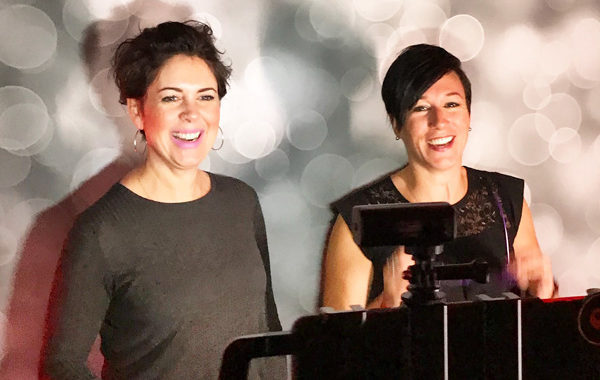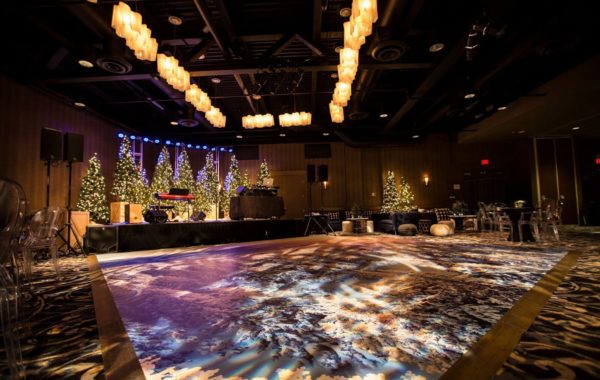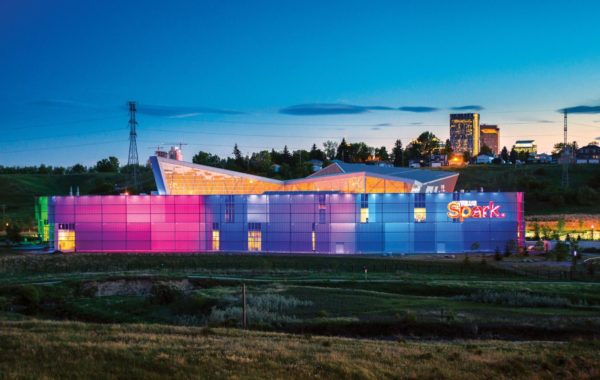All around the world, coworking space is popping up faster than you can say high-speed wifi. We’ve been on the hunt to find the perfect home for our Vancouver office, and following a string of fabulous tours, Amy – Young Event Prof to Watch and our boots-on-the-ground in YVR – made the tough call and chose Spacekraft by CMPNY in Burnaby as her permanent work home. What we didn’t expect was to learn so much along the way.
 Photo credit: instagram.com/cmpnycowork
Photo credit: instagram.com/cmpnycowork
“I was blown away by the incredible selection and quality of coworking space in Vancouver,” says Amy. “With every tour, I learned something new about what makes a productive workplace.”
So in the spirit of sharing, here are three things we can all learn from these cool coworking spaces.
Lesson 1: Open up to a more progressive business model
With flex hours, remote working, and freelance careers becoming more and more common, it’s a given that all of these freedom-seeking professionals would end up also seeking a better place to park their laptops than coffee shops and their home offices. The forward-thinkers behind local coworking opportunities are filling a void and meeting these modern-day needs – and they’re not stopping there. Along with this core offering, the best coworking spaces are looking for other ways to do and be more for their members and the larger community.
For example, most will rent meeting space to non-members by the hour – we took advantage of this recently with a full-day team meeting at Suite Genius in Mount Pleasant. Getting your team out of your regular office space or bringing remote employees together is the perfect way for everyone to achieve a fresh perspective, get ideas flowing, and make renewed connections, and these spaces are ideally set-up for you to take advantage.
 Many of the spaces go even further by also welcoming a myriad of other event rentals. Amber from Suite Genius told us that their space is available all week, day and evening, to rent for workshops, pop-up shops, branding events, video and photography shoots, launches, talks, meet-ups, and private dinners. If they were only focused on shared workspaces, they’d be missing a huge opportunity, but by opening up their business model, they’ve captured a huge additional market. When touring The HiVe’s Vancouver coworking space, for example, we could totally envision an interactive ILEA event drawing from the creative energy of their event space.
Many of the spaces go even further by also welcoming a myriad of other event rentals. Amber from Suite Genius told us that their space is available all week, day and evening, to rent for workshops, pop-up shops, branding events, video and photography shoots, launches, talks, meet-ups, and private dinners. If they were only focused on shared workspaces, they’d be missing a huge opportunity, but by opening up their business model, they’ve captured a huge additional market. When touring The HiVe’s Vancouver coworking space, for example, we could totally envision an interactive ILEA event drawing from the creative energy of their event space.

Photo credit: hivevancouver.com
Many of the places we toured also use their spaces to create opportunities for networking and professional development – one of the main benefits of coworking. Sabrina from L’Atelier Vancouver, located in Gastown, told us, “We often host our own events for members and the larger community: potlucks, trivia nights, holiday parties.” Spacekraft really shines at this as well, with so many opportunities for members to connect, learn, and network – a big part of the reason that Amy chose to become a member here. In just her first three weeks at Spacekraft, Amy attended three networking events AND signed up for their exciting Grit program. Providing so many professional development opportunities is a way that Spacekraft was able to set themselves apart and fill a niche.
If you’re going to start bringing people in by offering programs and events, it’s important to know your audience. Mitchell, owner of Suite Genius, said, “We found that co-working spaces, ours included, are neighbourhood specific. The workers are representative of their communities, and so the programming needs to reflect that. Our Kitsilano space is very Kits focused. The crowd is a bit older and have families, so our programs are day-time oriented. A lunch-and-learn session on gut health will perform better in the Kits space than in Mt. Pleasant. They prefer the Thursday happy hour.”
Seeing the ways these spaces look for opportunities to expand their business models and bring people together has inspired us, more than ever, to look for chances to do the same.
 Photo credit: ateliervancouver.com
Photo credit: ateliervancouver.com
Lesson 2: Design matters
Each venue we toured had a unique vibe designed to work best for and appeal to its membership. L’atelier boasts bright loft-like spaces with exposed brick walls, clean white expanses, and a chill and modern vibe. The Network Hub also features exposed brick, paired here with character touches like edison bulb light fixtures.

The HiVE had a great balance between modern-chic and laid-back artsy – you can kick back in a hammock, or have your morning coffee in their art lounge.

SpaceKraft’s design features and environment made Amy feel at home right away – the open concept desk area feels collaborative and is filled with pops of energetic colour and lots of natural light. With other features like space café windows and a bean bag lounge with a great view, there’s a space to fit her every mood. Little touches like a daily inspirational quote on the wall add to the sense of belonging and comradery, and the broadcast rooms with built-in webcams allow her to communicate seamlessly with our Calgary team.

When it comes to how to design a coworking space, David from SpaceKraft noted a need for strategic variety that can apply to the design of any workplace. “In our pursuit to support our community of hustlers, we are integrating quiet rooms so people can focus,” he says. “We all know that a hard day’s work includes at least a couple hours of intense focus away from the lounges and the front desk.”
Some tips we saw across the board for designing spaces for productivity and creativity were:
- bright, natural light and open spaces
- quiet spaces to focus on a task or make phone or video calls
- lounge spaces where people can break away to hold meetings or socialize and network
- more active community areas with activities like ping pong and foosball
Mitchell at Suite Genius may have summed it up perfectly when he said, “If a person is going to come and use a space and do good work in it, they need to feel like it’s a nice place to be, and that it’s approachable. We wanted to set ourselves apart as a community-focused space that considers design, but also to make sure the spaces didn’t look too “styled” or done. Our vision was to create a beautiful space without sacrificing function to best support our members.”

 Photo credits: instagram.com/randalkurt instagram.com/bemovedmedia
Photo credits: instagram.com/randalkurt instagram.com/bemovedmedia
Lesson 3: Connect to your community, and consider social impact
One of the most inspiring things we saw across the board was a pervasive social and environmental awareness and deliberate connection to community that was clearly a priority to each and every space we toured. Each had very present and visible recycling and waste-reducing programs in place, as well as a keen focus on sharing resources – a natural fit for businesses built on shared spaces.
Each space was also a reflection of the community in which it lives, and made clear efforts to both connect and give back. Sabrina from L’Atelier told us about their partnership with Covenant House Vancouver through the Focus Journal. This project is the perfect example of involving the community, for the community: L’Atelier members came together to create the Journal, the project was originally funded through a Kickstarter campaign, and L’Atelier donates $1 to Covenant House for every Focus Journal sold.
L’Atelier also partners with local businesses in their community like Whisk Matcha and Club Card or even day cares and other coworking spaces in BC. We loved the take that Minna from The Network Hub gave us on community vs competition: “Collective collaboration is a more natural approach and we would argue is the key to building a better community, due to the focus on community and not competition,” she says. “Through hackathons, workshops, and meetups, we find that common agendas and openly sharing skills and data between organizations and industries have created some of the most amazing community impact projects.”
Bringing it home
As we really start to make progress on our exciting new building project – which includes business partnerships, community spaces, and coworking spaces – in Calgary, we’ve been able to take so much inspiration and learn so much from these creative, progressive, and community-minded businesses. We have a hunch you can too, and we’d love to hear how you were inspired. Hit us with your thoughts here, here, or here!




